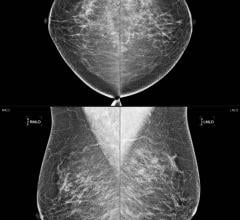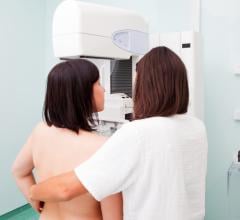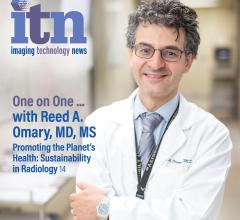February 5, 2016 — The January 2015 Harvard Women’s Health Watch discusses the new mammography guidelines from the U.S. Preventive Services Task Force (USPSTF) and what they mean for female patients.
Women who tend to “go by the book” for preventive healthcare probably get a flu shot each fall, have a colonoscopy every 10 years and generally follow the experts’ recommendations. But what to do about mammograms? For decades, the two most influential expert groups — the American Cancer Society (ACS) and the U.S. Preventive Services Task Force (USPSTF) — haven’t agreed about when to start having mammograms, how often to have them or how long to keep on having them. The ACS recommends annual screening for women ages 45 through 55 and biennial screening thereafter for as long as a woman is healthy. The USPSTF advises biennial screening for women ages 50 through 74.
Although the two groups come a little closer together with their most recent guidelines, they still disagree about breast cancer screening for women ages 45 to 55. Nancy Keating, M.D., professor of healthcare policy at Harvard Medical School and an internist at Harvard-affiliated Brigham and Women’s Hospital, sums up the situation: For women older than 40 who are at average risk, there is no single right answer to the question, “Should I have a mammogram?”
The guidelines are only suggestions. Women trying to decide when — or whether — to have their next mammogram may want to have a conversation with their clinician. They can work together to estimate her personal risk for breast cancer, weigh the benefits and risks of mammography, and consider her values and preferences. Keating suggests exploring the following questions:
- What is my personal breast cancer risk?
- What are the risks and benefits of mammography for me?
- How would I react if I chose not to have a mammogram and developed invasive breast cancer?
- Am I willing to undergo treatment for ductal carcinoma in situ (DCIS) — abnormal tissue that may not progress to invasive cancer?
- What are my preferences?
Mammography isn’t perfect. It is associated with a substantial rate of both “false negatives”—missed cancers—and “false positives”—images that suggest cancer when it isn’t present. According to the National Cancer Institute, mammography misses about 20 percent of cancers. In addition, 100 of every 1,000 women who have mammograms at any screening will be called back for further testing because of a suspicious finding. Yet only five of those 100 will actually have breast cancer.
Moreover, about 19 percent of cancers detected by mammography will never cause symptoms or become life-threatening. That’s because mammograms detect abnormalities like DCIS—a buildup of abnormal cells within the breast ducts—which is considered a precancerous condition. DCIS is usually treated with surgery and often radiation as well, even though a majority of DCIS lesions would never progress to outright cancer. Identifying and treating such “harmless” conditions is also known as overdiagnosis and overtreatment.
Finally, about 85 percent of women who die of breast cancer would have died whether or not they had a mammogram. There is growing evidence that some tumors have already shed cells into the blood before they are large enough to be evident on a mammogram.
In developing their guidelines, both the ACS and the USPSTF reviewed reams of evidence to weigh the benefits and risks of mammography. Most of the information they considered was from large observational studies in which researchers tracked the health of women who followed different mammography schedules. The ACS published its new guidelines Oct. 21, 2015, in The Journal of the American Medical Association. The USPSTF has a draft of its 2015 guidelines on its website.
The ACS experts determined that the risk of breast cancer is so low in women under 45—only about six in 1,000 women ages 40 to 45 will develop it over the next five years—that the harms of mammography likely outweigh the benefits in this age group. The organization recommends annual screenings beginning at age 45 because the likelihood of getting breast cancer increases at that point.
The ACS recommends annual screening for women ages 45 through 54 because some evidence suggests that annual screening may be associated with finding smaller tumors for women in that group, whereas the same benefit was not found for older women. It recommends biennial screening for older women, who are more likely to develop slower-growing cancers.
The USPSTF determined that women ages 50 through 74 obtain the greatest benefit—defined as reducing their risk of dying of breast cancer—from mammography. It also concluded that screening every two years had benefits similar to annual screening, but caused less harm.
Current research is directed at finding ways to reduce overdiagnosis by distinguishing precancers and early cancers that are unlikely to advance from those that may spread and become life-threatening. Scientists are also working to develop tests to detect microscopic aggressive cancers before they can be seen on a mammogram. For now, whether or when to have a mammogram is a decision for patients to make with their doctor. And while there may not be one “right” answer, they can likely find one that is right for them.
For more information: www.health.harvard.edu


 July 29, 2024
July 29, 2024 








